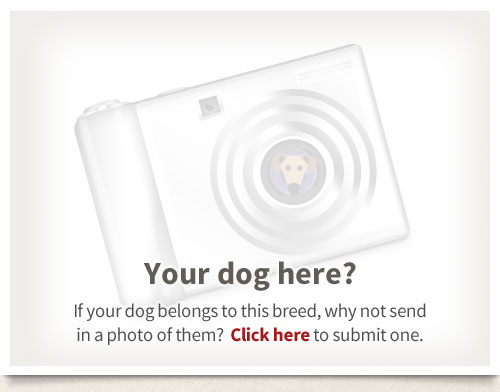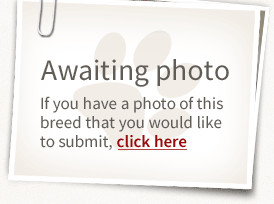Origin
The Otterhound originated in Great Britain, its purpose being to control the number of otters which were held accountable for depleting fish stocks when fish was a staple food item for humans. There is no consensus as to which breeds contributed to its development but the most logical would seem to be the Griffon Vendeen, the Griffon de Bresse and the Griffon Nivernais. The hunting of otters with packs of dogs is documented from the 12th century onwards and King Edward II (1307-27) carried the title Master of Otter Hounds, but it is likely that it was only in the 1700s that the hounds started to resemble the modern Otterhound. A specialist breed developed to hunt a single species, at the beginning of the 20th century there were two dozen packs comprising around 500 hounds hunting regularly but numbers of Otterhounds dwindled dramatically when the otter population declined due to river pollution and became a protected species in 1978. Some Otterhounds are now used to hunt mink and on drag hunts but, overall, their numbers are few and they are officially regarded as a Vulnerable Native Breed. Worldwide the population of Otterhounds is believed to be less than 1000.
Character
A large, amiable fellow with a joyful heart the Otterhound can be a good companion for those who do not demand a pristine house. He tends to bumble around and can be quite clumsy. Also, the amount of debris that he can collect in his shaggy coat and drop on the floor, and the amount of mud he can transport on his large feet and transfer to a carpet is quite impressive. Being bred for many years as a pack hound he does need a lot of company and should be included as one of the family, not condemned to a lonely life in an outside kennel. He is very loyal to his people and affectionate, but he is not fawning or demanding of fussing and petting, simply being with you and knowing that he is secure and loved is enough. He is generally good with other dogs and animals if raised with them but if attacked by another dog he will respond quite fiercely. Usually quite reliable with children his size, boisterousness in youth, and somewhat ungainly movements may make him unsuitable for toddlers. He is a good watchdog who will announce the presence of visitors with a loud and deep voice, however his basically friendly nature is not the stuff of guard dogs, but he will endeavour to protect his family if seriously provoked. As is the case with most hounds he needs a securely fenced garden. He is a tenacious and unflagging hunter over land as well as in water and may escape to follow an enticing scent - with unfortunate consequences. The Otterhound has been described as having the courage of a Bulldog, the strength of a Newfoundland in water, the stamina of a Foxhound, the patience of a Beagle, and the intelligence of a Collie. These qualities require an owner who is a strong leader and who well understands the nature of a hound. This breed is not recommended for inexperienced owners.
Exercise
Being bred to work for hours over all types of terrain, through undergrowth and in water the adult Otterhound needs a considerable amount of exercise if kept in a domestic situation. As an adult he needs a minimum of two 30 minute walks every day and, if possible, the chance to gallop, to ramble around at his own pace and allow his inquisitive nature some rein in a secure area. Consideration must be given to the fact that this is a scent-hound and, while he may not chase anything and everything that moves, if he picks up an interesting scent he will follow it wherever it may lead so off-lead exercise, especially with young dogs, must be approached with caution. His element is water and swimming will not only delight his soul but will provide splendid exercise. The canine sport of tracking will allow him to do what he does best - follow that amazing nose, and it will also stimulate him mentally. Otterhound puppies do not need, and should not have, long walks. Neither should they be allowed to indulge in jumping, rough-housing with people and other dogs, or running up and down stairs. Such activities will place damaging stress on vulnerable young bones and joints and may lead to potentially crippling problems in later life.
Training
The size and power of the Otterhound make obedience training essential. Physically he will probably grow to be stronger than his owner so it is wise to ensure that he is responsive to verbal commands. He can be a bit stubborn sometimes but that comes with intelligence - if he sees no point in the exercise then why should he put himself out to do it? The key is to keep training sessions short, fun and interesting and ensure that commands are consistent. Positive reinforcement using treats, praise and/or games will bring out the best in him. Despite his rugged appearance he is a sensitive dog and harsh methods, whether physical or verbal, will crush his spirit and weaken his trust in, and respect for, his handler. Socialization should be commenced from an early age. Introducing the pup to new sights and as large a variety of people and dogs as possible will ensure that he grows to be a confident, stable, well-mannered and charming representative of his breed.
Health
- Hip dysplasia
- elbow dysplasia
- allergies
- epilepsy
- Type 1 Glanzmann’s thromasthenia
- susceptible to gastric dilitation volvulus (GDV)
- bloat
Pictures
Some photographs of the Otterhound...







